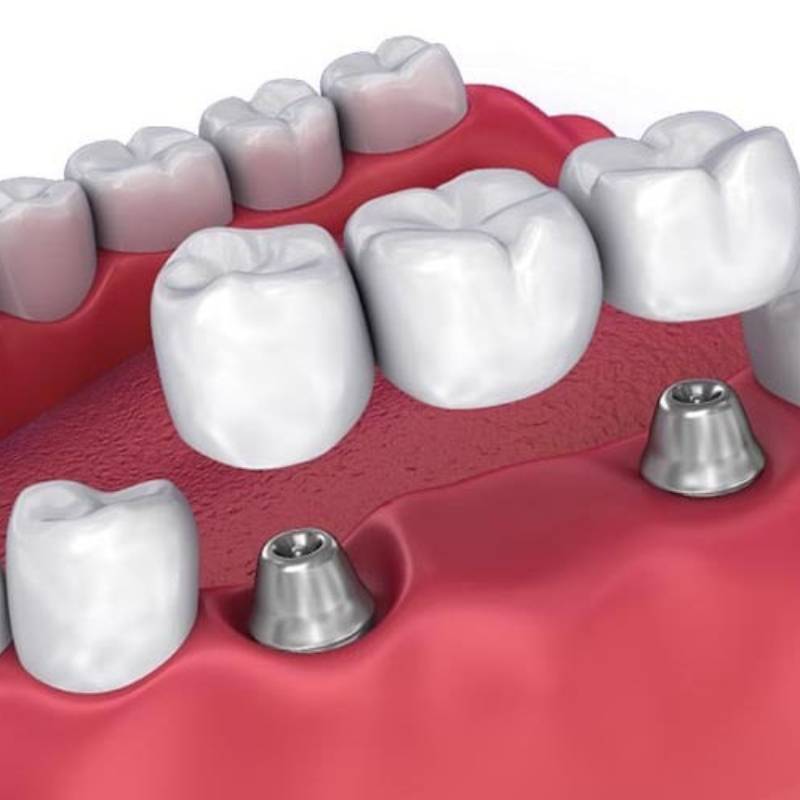Bone augmentation in implant dentistry refers to a group of surgical procedures aimed at increasing the volume and quality of bone in the jaw to support dental implants. This is necessary when patients have experienced significant bone loss due to tooth extraction, periodontal disease, trauma, or long-term absence of teeth. Bone augmentation allows the placement of dental implants in patients who would otherwise not be candidates due to insufficient bone. The success of dental implants depends on having adequate bone for anchorage and stability, making augmentation a critical part of implant dentistry in many cases.
Types of Bone Augmentation Procedures
Several different bone augmentation techniques are used in implant dentistry, each suited to specific types of bone loss and patient needs. The most common procedures include:
- Guided Bone Regeneration (GBR)
Guided Bone Regeneration is one of the most widely used methods of bone augmentation in implant dentistry. It involves the use of barrier membranes to guide the growth of new bone in areas of deficiency. This technique often involves placing a bone graft (either natural or synthetic) in the desired area, which serves as a scaffold for new bone growth.
- Bone Grafts: The bone graft material used can come from various sources, such as:
- Autografts: Bone harvested from the patient’s own body, typically from the chin, jaw, or hip. This type of graft is considered the gold standard because it contains living bone cells and natural growth factors.
- Allografts: Bone sourced from a human donor, typically cadaver bone that has been processed to ensure safety.
- Xenografts: Bone from another species, usually bovine, which is processed to be biocompatible and safe for use in humans.
- Alloplasts: Synthetic bone substitutes made from materials like calcium phosphate or bioactive glass that can integrate with the natural bone over time.
- Barrier Membranes: In GBR, a membrane is used to protect the bone graft site from the invasion of soft tissue, allowing bone cells to regenerate in the area. The membrane can be either resorbable (dissolves over time) or non-resorbable (needs to be removed in a second surgery).
- Sinus Lift (Sinus Augmentation)
A sinus lift is a specific type of bone augmentation used in the upper jaw when the maxillary sinus has expanded into the area where teeth once were, reducing bone height. This procedure involves elevating the sinus membrane and placing a bone graft in the space created. Over several months, the graft material integrates with the existing bone, increasing bone height to allow implant placement.
There are two types of sinus lifts:
- Direct (Lateral) Sinus Lift: Performed when there is very little bone remaining in the upper jaw. A window is created in the side of the sinus cavity, and the membrane is lifted, with bone graft material placed underneath.
- Indirect (Crestal) Sinus Lift: Used when there is more bone available. This less invasive method involves lifting the sinus membrane from inside the jaw by accessing it through the implant site.
- Block Bone Grafting
Block bone grafting involves taking a block of bone, usually from the patient’s chin or the posterior part of the lower jaw, and grafting it into the area where bone is deficient. The block is secured with tiny screws to hold it in place during healing. This technique is particularly useful in cases where there is a significant horizontal or vertical bone deficiency. After the bone has integrated with the surrounding jawbone, which usually takes several months, dental implants can be placed.
- Ridge Expansion
If the jaw is not wide enough to accommodate implants, a ridge expansion may be performed. In this procedure, the ridge bone is split and widened. A bone graft is typically placed in the gap created by this expansion. This technique is commonly used for patients with narrow alveolar ridges, providing additional space for implant placement.
Bone augmentation is a crucial aspect of implant dentistry, enabling patients with insufficient bone volume to receive dental implants. Advances in grafting materials and surgical techniques have made bone augmentation a predictable and successful procedure, improving the outcomes of dental implant therapy.


